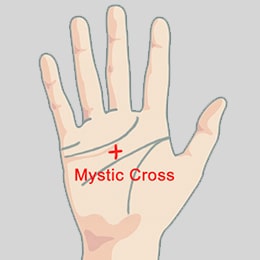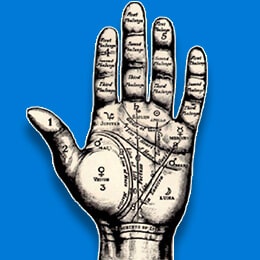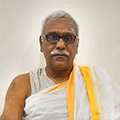An Introduction to the Hand
(Fig 1.1)

Palmistry divides the hand into two parts:
(i) Thumb and the fingers
(ii) Palm and the Mounts on it
The Thumb (See Fig. 1/1)
A long thumb signifies intelligence and discretion in its owner, whereas the short thumb is an indication of tendency towards haste. Its first phalange (on which the nail grows) is a measure of a person's resolve. Those with a long first phalange are men/women of action and the second phalange indicates the capacity for thought. Those with a longer second phalange have little inclination to action, but are always immersed in thought. Those with a short thumb are prone to act without thought.
The Fingers (See again Fig. 1/1)
Each finger has three phalanges: the one on which the nail grows is the first phalange, the next to it is the middle phalange and the one adjacent to the palm. is the third phalange.
The finger next to the thumb is called the Index finger. It represents the ego of a person and his desire for recognition or prestige. If the index finger is longer than normal it is indicative of a person's desire to dominate others; smaller than normal it represents a lack of ambition. Such a person is only a follower, never a leader.
The finger next to the Index finger is called the Middle finger. It represents the balance of mind, sagacity and the love of solitude. It is, in most cases, longer than the rest of the digits or fingers. If it is equal in length to the index or the third, or Ring finger, it is supposed to be a small middle finger. A person with such a finger will be petty-minded and those having a very long middle finger shy away from human company.
The third or the Ring finger is indicative of a person's desire for ostentation and fame. A person with a small ring finger is totally devoid of the tendency towards ostentation. Nor do persons with such fingers take any risks. If the ring finger is longer than usual, i.e., if it is longer than the index finger, a person would be given to too much ostentation rod would love to take risks. Those risks include speculation, gambling and other games of chance.
The fourth or the Little finger represents eloquence and wit. A little finger which extends V) the end of the first phalange of the third finger is considered to be of average length. If it is longer, these qualities become more pronounced in a person. Converse is the case if the finger is of less than average length. A person with a small little finger suffers from an inferiority complex and he does not have the courage to speak out his mind.
Other Features of the Thumb and the Fingers
A thumb which extends upto the middle of the third phalange of the index finger is considered to be of an average length. Smaller than that, it is considered small and long if the converse is the case.
If the knots of the 'fingers are prominent, a person is given to too much thinking. He has more of an analytical bent of mind than emotions. If the fingers are soft and the knots are depressed or not prominent, a person has a highly developed imagination and is sentimental. His decisions are taken intuitively rather than as a result of thought.
Palm on the Mounts on the Hand(See Again Fig 1.1)
We now come to the palm. Palmistry divides the palm into nine divisions. They are called the Mounts.
The mount at the base of the Index finger indicates a person's desire to lead others, his ambitions and his ego. Palmists call it the Mount of Jupiter. That is why the finger has the peculiarities of Jupiter.
The small area at the base of the middle finger is indicative of the placidity of character, the analytical power, the desire for worldly goods and the yen for solitude. It has been named after Saturn as the Mount of Saturn, The Middle finger has all the peculiarities of Saturn.
The small area below the third or ring finger, is indicative of a person's zeal, desire for ostentation and the love of fine arts. It is called the Mount of the Sun or Apollo and the third ringer has all the peculiarities of Sun.
The area below the little finger is indicative of a person's pragmatic bent of mind and eloquence. It is named as the Mount of Mercury and this finger has all the peculiarities of Mercury.
A small area below the Mount of Mercury is indicative of a person's patience. Western palmistry calls it the Upper Mars.
The area below the Mount of Jupiter is called the Lamer by Western palmists. It is indicative of the amount of courage a person has The experience of the present author, however, shows that it is not easy for students of palmistry to remember the Upper and the Lower Mars. He has, therefore, taken the liberty of renaming these areas as Defensive Mars and the Al Aggressive Mars,, on the basis of their peculiarities It would be easier to remember them if you identify them by reference to their special qualities.
The area below the Defensive Mars, extending upto the edge of the palm in one direction and the wrist in the other represents the imagination and the desire for change in a person. This area is known as the Mount of the. Moon.
The area under the Aggressive Mars which extends from the base of the thumb to the wrist shows the sex urge, the vitality and the amount of human sympathy in a person. It has been, named as the Mount of Venus.
The area which lies within these mounts is known as the Plain of Mars. If it appears to be full, a person has excess of physical strength and he does not easily lose courage. If it is depressed, a person loses courage in the struggle for life.
If a mount in the palm is prominent, it is known as a developed mount. A person having a particular mount in a developed state is likely to have the qualities associated with that mount. Converse is the case if a mount is depressed or under-developed. The Mount of Saturn is generally found in a depressed state, but because the finger associated with it, the Middle one, is longer than the rest, it offsets the deficiency of the depressed Mount of Saturn.











































